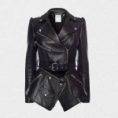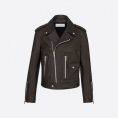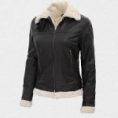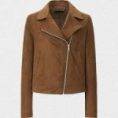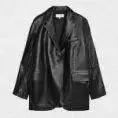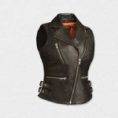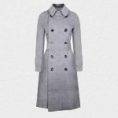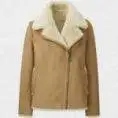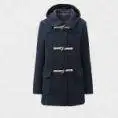1. The very first duffle coats were made for the British Navy
The first duffles were made for the British Royal Navy in 1896. It’s thought they were worn by Royal Navy marines on an expedition to Antarctica.
2. Traditionally, duffle coats were oversized because sailors shared a communal duffle coat
The coats were used by any sailor who needed a coat to go up on deck. So the duffles were cut generously to accommodate all shapes and sizes of sailors.
3. The toggles on a duffle coat were created for a practical reason
The original duffle coats had wooden toggles with rope fastenings. This was so that sailors could unfasten their coats without removing their thick gloves. The polished buffalo horn toggles were introduced in the 1950s.
4. Original duffle coats did not have a checked lining
Original duffles were a single layer of thick fabric, without the trademark check of modern duffles. The checked lining was introduced in the 1950s as duffle coats grew in popularity after the war.
5. Duffle coats are cut differently to other coats
Duffles are designed to hang from the shoulder, rather than be fitted to the chest like overcoats. Traditional duffle coats are still cut this way. But you can also buy more flattering styles that nip in at the waist.
6. The large hoods were designed for a specific reason
A duffle coat hood is usually called a ‘pancake hood’ because it’s designed to lie flat against the back of the coat, like a pancake. But why are they so big? Because they were originally designed to fit over officers’ peaked naval caps.
7. Duffel is an actual place
Duffel is a town in Belgium where the heavy woolen cloth used to make original duffle coats was made. Although the material is no longer made in Duffel, the name has stuck. And nowadays, the spelling has become anglicised, so you can refer to your coat as a ‘duffel’ or a ‘duffle’. And sometimes you’ll also see ‘duffell’.
8. The first duffle coats were a range of different colours
If you’ve ever wondered why duffle coats come in many colors, it’s because it was ever thus. The first duffles were a camel, olive, or navy. Now it’s possible to buy duffle coats in a range of colors, with red being a firm favorite. And of course, Paddington Bear ensures that a blue duffle coat is always in vogue.
9. The extra panel of material was inspired by the donkey jacket
In the late 1900s, tailor, George Keys, designed the donkey jacket for workers on the Manchester ship canal construction project. Duffle coat makers copied the idea, and the shoulder ‘saddle’ (as it’s known) was introduced to protect the sailors from rain. It also stopped the sailors’ shoulders from chafing when they carried ropes over their shoulders.
10. The most famous human to wear a duffle coat was…
Field Marshal Bernard Law ‘Monty’ Montgomery. The 1st Viscount Montgomery of Alamein has always been credited with making duffle coats popular when he wore one in Tunisia during WW2. Cynics have claimed that he wore a duffle to try and build rapport with his men and blur distinctions between the officer class and the squaddies. We just say ‘yay’ for Monty for helping to make the duffle coat iconic.
11. The most famous duffle coat wearer EVER is…
Paddington Bear. This lovable character was inspired by a real teddy bear that author, Michael Bond, found left on a shelf in a London shop on Christmas Eve, 1956. The author bought it for his wife and then started to create stories about it.
Contrary to popular belief, Paddington did NOT arrive from the deepest darkest Peru wearing his duffle coat. He only came with a hat (from uncle Pastuzo) and a luggage label tied around his neck. His duffle coat was a present from the Browns not long after they took him home.
We are eternally thankful to the Browns for that duffle coat.

